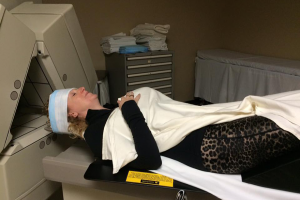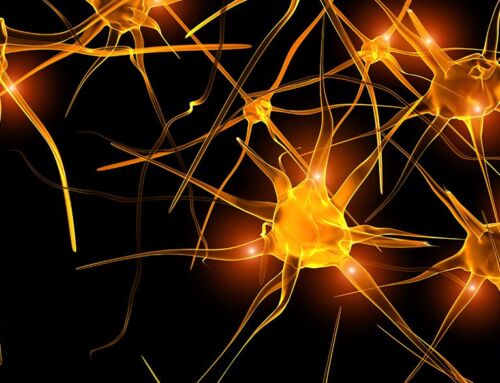
How I put fifteen years of brain-friendly tactics to the test.
So excited, I was flying toward Los Angeles to have my brain scanned. Over three days of intensive testing I would be put through a battery of tests to see how my brain was functioning, and what, if anything I could do to improve it!
What would they find? Has the work I’ve being doing to optimise my brain been working? The tips and techniques I’ve taught hundreds of people in top organisations and institutions? I was about to find out…
Our amazing brains
As someone who has taught brain-based learning and leadership for many years, I have always loved the idea of getting to know my brain. If you have ever seen images, some of the structures that make up our brain are quite beautiful. All those amazing multi-coloured brain cells pinging together and creating new ideas! (Check out these luminous images at Human Connectome Project or learn how Van Wedeed, a Harvard Medical School neuroscientist, photographs the brain’s architecture with Diffusion Spectral Imaging.)
Brain science has fascinated me for years; the idea that the brain is plastic and can be trained and optimised if we understand it better and have the right tools. Our brains, like ourselves, are constantly learning and adapting. We now know we can grow new brain cells at any age, through the process of neurogenesis, especially in the right conditions. As neuroscience evolves, we are learning more and more about how to harness the brain’s potential through initiatives such as human brain mapping project.
This curiosity inspired me to embark on a research degree in the neuroscience of leadership (the new field that brings knowledge of brain science to areas such as leadership development, management training, change management and coaching). I wanted to explore some of the discoveries that were emerging, then synthesise what I was learning into practical things people can do every day to improve their workplaces and lives.
I was practicing many of these techniques in my own life, weaving in what I knew about positive psychology and emotional intelligence. It’s always been important for me to do what I teach, to share the robustness of science as well as the real world experience. Not simply to know it—to do it. In my experience that’s often the missing piece. The more we learn about brain health and how it affects our emotional and physical wellbeing, the less we seem to practice healthy habits, then wonder why we suffer ill health.
So when I heard about the brain scanning offered at the Amen Clinic and a three-day window opened up before I was due to present at the World Congress on Positive Psychology in Orlando last year, I jumped at the opportunity.
Were all the things I was doing to boost my brain health working? Here was a chance to find out!
Plus it would be fun. How many people get to see and share what their brain looks like?
A new way to look at brain health
When I arrived at the Amen Clinic in Orange County I realised I had had far too little water and rest. The flight from Australia is long and as usual, I’d been working on my presentation and a dozen other tasks, along with the anticipation. Suddenly I felt nervous. Was my brain healthy and at it’s best?
Work had been hectic for a number of years, and some recent challenges with relationships had added to the pressure. As head of a group of growing companies, I’m in and out of airports, conference suites and boardrooms, Skyping with my team and spending far too little time back home. I love what I do, so the stress is all part of the excitement. Would that show?
The Amen Clinic helps people with mental and physical health issues, such as those who have experienced a traumatic brain injury or memory loss, alongside those who want to check and boost their brain health. By looking at the brain they can detect problems early and target recommendations and treatment plans in ways they report are uniquely successful.
Getting a scan to help diagnose a physical ailment is common sense, yet when it comes to our emotional wellbeing we need to verbalise our symptoms with a ‘best guess’ treatment supplied. How we examine our emotional wellbeing is changing with new technology that can identify issues such as PTSD, addictions, depression or anxiety or even shed light on procrastination and impulsivity, with technicians then able to determine appropriate treatments. The scans can also show how positive activity helps the brain and can pick up our levels of motivation and critical thinking.
The Amen Clinic’s approach combines brain imaging, lab studies and an exploration of the person’s biological, psychological, social and spiritual life to come up with a complete picture of brain health and what it needs to find optimal balance.
Taking the tests: Inside my brain
Before arriving at the clinic I had filled in a battery of forms: about 20 pages of detailed personal history and extensive psychometric tests to assess my wellbeing and mental health.
My first test was a concentration scan. I was taken into a small room where I performed a concentration task known as the Go/No-go test.
This is designed to test my capacity for sustained attention and response control by measuring how fast I clicked a computer key in response to certain patterns on the screen (Go) or inhibited that action when I saw a different pattern (No-go). Part way into the 15 minute test the technician put an IV line in my arm, causing my only momentary lapse in concentration (I’m not very good with needles). This prepared them to flood isotopes through my brain so they could monitor my concentration levels while performing the cognitive task. When I was finished I was wheeled into the brain SPECT machine.
(Here I am going into the SPECT machine, wearing my leopard print leggings for my friend Nicki who thought my brain would be black and orange striped like a tiger.)


SPECT (Single-photon emission computed tomography) scans the brain using a radioactive substance and special camera that creates 3-D pictures. While imaging tests like MRIs or X-rays can show what the structures inside your body look like, a SPECT scan produces images that show how those organs work. By looking directly at how the blood flows in the brain, and indirectly at brain activity, SPECT imaging shows the areas of the brain that work well, work too hard and don’t work hard enough.
In the afternoon I was put through a full spectrum of cognitive tests, including the Stroop test and ones for memory and speed. (If you are curious you can take some of these brain tests online at Cambridge Brain Sciences.)
On the second day my brain was scanned in its resting state. I was to spend 15 minutes in the darkened room daydreaming. I was specifically told not to meditate or go to sleep. The idea was just to drift and think about nothing much. I have to say these 15 minutes were blissful. I found myself reflecting on some of the emotional, business and relationship situations I had been experiencing, finding clarity and making some key decisions.
The day was rounded out with in-depth interviews about my family history, emotional and physical health issues, diet and exercise habits, social surroundings, stress levels, spiritual practices and beliefs.
On the last day I received the doctor’s report. She showed me the scans and explained the results.
Here are some pictures looking at both the outer and inner perspectives. The first image show the brain surface from different angles and the second image looks at activity patterns inside the brain.


Doesn’t my brain look pretty? I fell in love with my brain.
How healthy is my brain? The results!
The interpretations provided by the doctor were very accurate and telling, and far more positive and useful that the written report, which like many traditional generic assessments was biased toward finding and analysing problems.
These were among the best results the doctor had seen!
She said the outer scans were amazing, indicating a very healthy brain. For example, there was very little scalloping on the brain surface. Those would have indicated areas that weren’t working well. She put the very minor indents down mostly to tiredness and dehydration due to long distance travel.
The scans showed lots of activity in many areas of the brain, which indicates connectivity between different parts. Interestingly this was more in the resting scan. Not surprising when my brain wasn’t really resting, instead it was excitedly thinking.
The inner scans showed that higher order thinking and motivation was particularly dominant, based on activity in the cerebellum and pre-frontal cortex. That means my thinking and decision-making processes are really strong.
They also showed a diamond pattern between the anterior cingulate cortex, basal ganglia and deep limbic system (the emotional centre of the brain). I was told that when this pattern shows up it can indicate a degree of emotional trauma. This flummoxed me at first because I don’t feel I have really experienced anything traumatic—other people may have felt similar events as trauma, though I didn’t experience them that way and increasingly tend to frame negative events in terms of learning. On reflection I recognised that the recent stressful emotional and relationship experiences may have been the factor. The doctor said the pattern was minor, likely indicating that I was thinking about recent experiences within an emotional context. This made sense; in fact I am quite happy about these results. As someone who teaches emotional intelligence, I like the fact that I experience emotions and spend time thinking about my emotions. Positive and negative emotions are both useful, and we can learn from experiencing and understanding them to make better decisions and actions.
The anterior cingulate cortex is an area of the bain which is also associated with moments of insight and one I have studied in my research on creativity. My brain must have been working well because during those brief moments in the SPECT machine I was able to come up with new ideas and insightful ways to solve some of those relationship problems.
Overall my brain was in great shape. I am very unlikely to suffer Alzheimer’s disease, a very pleasing prediction. I think my insatiable curiosity and appetite for learning will be a life-long protector.
Keep doing what you are doing, the doctor said. Clearly it has been working!
In Part Two of this article I will share the recommendations and actions I took away from this experience, and some of the things I have learned over the years that helped optimise my brain and can keep your brain healthy too.
To learn more join Learn with Sue for eBooks on topics such as 7 Ways to Apply Positive Psychology, 10 Brain Friendly Habits and How to Lead with the Brain at Work. Plus a range of tools to help yourself and others including questionnaires, values cards, posters and more.






